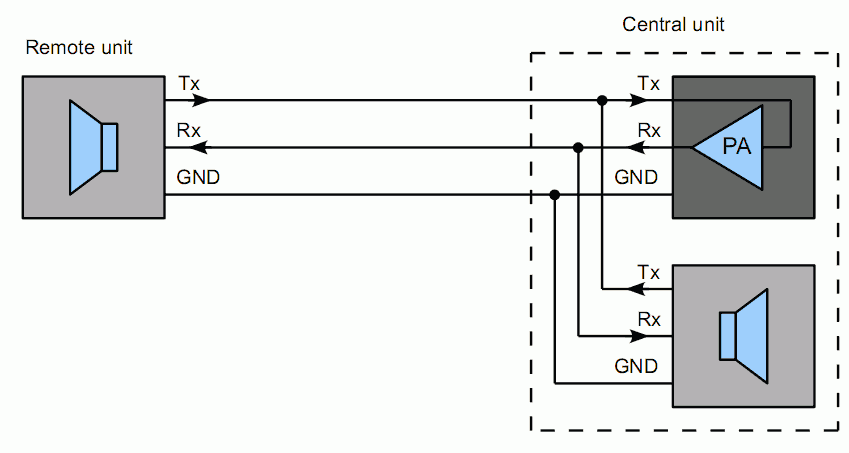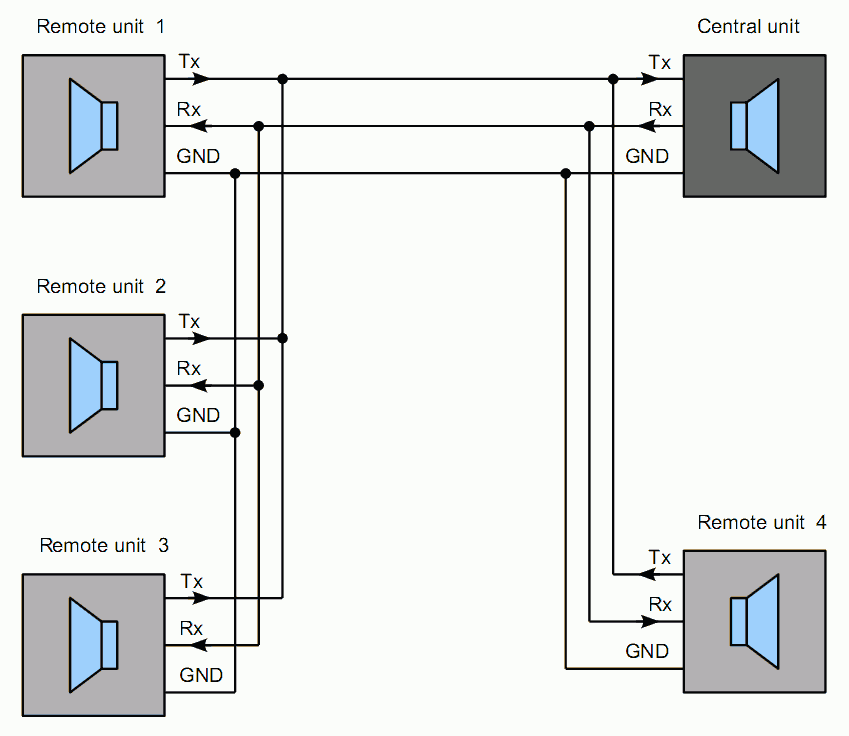Point to point two-way communication
The next diagram depicts the way in which two remote sets (drawn in light gray) should be connected to the central unit (dark gray) in order to establish two-way communication link between two distant points. As can be seen, one of the remote sets is expected to be enveloped into the same housing with the central unit. The only means in which it differes from the actual remote set on the left is its placement - both remote sets are mutually electrically identical. This is probably the most practical way of connecting system components together as batteries necessary for powering the central unit are easily accessible, but both remote sets can actually be connected remotely to the central unit if for whatever reason the user wants to do so - no change in system operation and performance will be observed.

As has already been explained on the previous page, Rx and Tx marks are referenced with respect to remote sets - since there might be more than one remote set in the system, this lessens the risk of misinterpretting wire functions when installing the system. You can click on each of the two units in the previous image to observe how Tx and Rx signals are being routed inside the system.
Point to multiple point communication - broadcasting messages
If more than two remote sets are connected into the system, each set will be able to talk to all other sets simultaneously. Only a single user will be able to talk to others at a time and only while the "Talk" push button on her or his remote set is depressed.The maximal number of sets that can be connected together depends solely on the central unit output amplifier maximal power. If low power BC547/557 transistors are used, then the maximal number is five or six. If sturdier components such as BC337/327 or BD135/136 are used, then it might be possible to connect as much as ten or more remote sets. In that case, 1Ω output resistors should probably be replaced with a few times lower resistance ones. Intercom communication is by its nature rather short so no real danger of power amplifier overheating exists.

The only rule that should be remembered when installing the system is that Tx wires of all units (i.e. of all remote sets and of the central unit) should be connected together. The same goes with Rx wires and with GND wires. System topology in terms of geometry is not important. Remote sets can be connected into a single branch i.e. a "BUS" or into multiple branches - a so called "Star" topology if the central unit is placed at the geometrical center of the system, or a "Tree-and-branch" topology if it is positioned somewhat more to the system periphery. The maximal wire length depends on the wire resistance as loudspeakers have only 8Ω each. Standard flat 4-wire telephone cables enable communicating from at least fifty meters distance but for bridging greater distances it would be wise to use thicker conductors.


